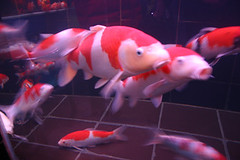Educating Young Giants: What Kids Learn (And Don't Learn) in China and America
by Nancy Pine
Palgrave Macmillan, 2012
ISBN: 978-0-230-33907-1
193 pp
China is not satisfied with its education and is trying to become more like America. America is not satisfied with its education and is trying to become more like China. What is going on?
Both countries are trying to prepare their students for the future, a future in which, according to one Stanford professor of Education herein quoted, schools must "prepare students to work at jobs that do not yet exist, creating ideas and solutions for products and problems that have not yet been identified, using technologies that have not yet been invented." Author Nancy Pine takes a look at American and Chinese education systems, where they came from, and both where they are going and where they need to go.
China's education philosophy comes from Confucianism and heavily promotes rote memorization at the expense of creative thinking. American education has traditionally been more geared to creative thinking, but with the rise in dependence on standardized tests, this is changing.
A history teacher at a prestigious urban school in Guangzhou summarizes what his understanding of his job is. "I spend every minute of every class telling my high school students everything I know about history. Their job is to take notes and memorize the material."
Before Chinese and American children even reach school age, their educations are dissimilar. For example, Chinese children tend to be told how to correctly play with toys, while American children are often left on their own to figure out how to play with their toys.
Also discussed is "prewriting," which is what happens when two- and three-year-olds are asked to write. In China, children's "prewritings" are small with angular lines that can be likened to Chinese characters. American children "write" in big swirls and fill up much of the page, looking more like the English alphabet.
Another idea Pine explores is the difference in the purpose of education. She quotes one Chinese observer of education as saying, "People in China see math and science as a tool to change their destiny, not to explore the world."
Of course, discipline in schools is discussed. In China, it is expected, demanded and just plain de rigueur. In America, discipline is - often a huge problem.
Any discussion of education in America must consider charter schools. Pine goes there, saying that American charter schools are successful basically because of their forward-thinking. School administrators in charter schools don't have to overcome central planning and the laser focus on preparing students for standardized tests.
Tests in both countries tend to measure what bits of information have been memorized. Tests of the future will also need to test thinking ability.
While readers might expect that a comparison of two countries' educational philosophies, which quotes a number of academics, by the way, might be prone to flatulent verbosity, this book actually is down to earth and easy to digest.
Pine doesn't try to offer many suggestions to improve America's education world, but when she does, at the end of the book, it can mostly be summed up as: let's spend lots more money.
If you are a reader who thinks copious notes and a long bibliography are important, you should know that there are 10 pages of notes and six pages of bibliography.
The book was published in 2012, so the reader might be left to wonder what has happened in Chinese and American education since then. Perhaps there is a more up-to-date book, but failing that there is still plenty to think about and mull over here in this book.
Marshall Hughes



.jpg)


No comments:
Post a Comment